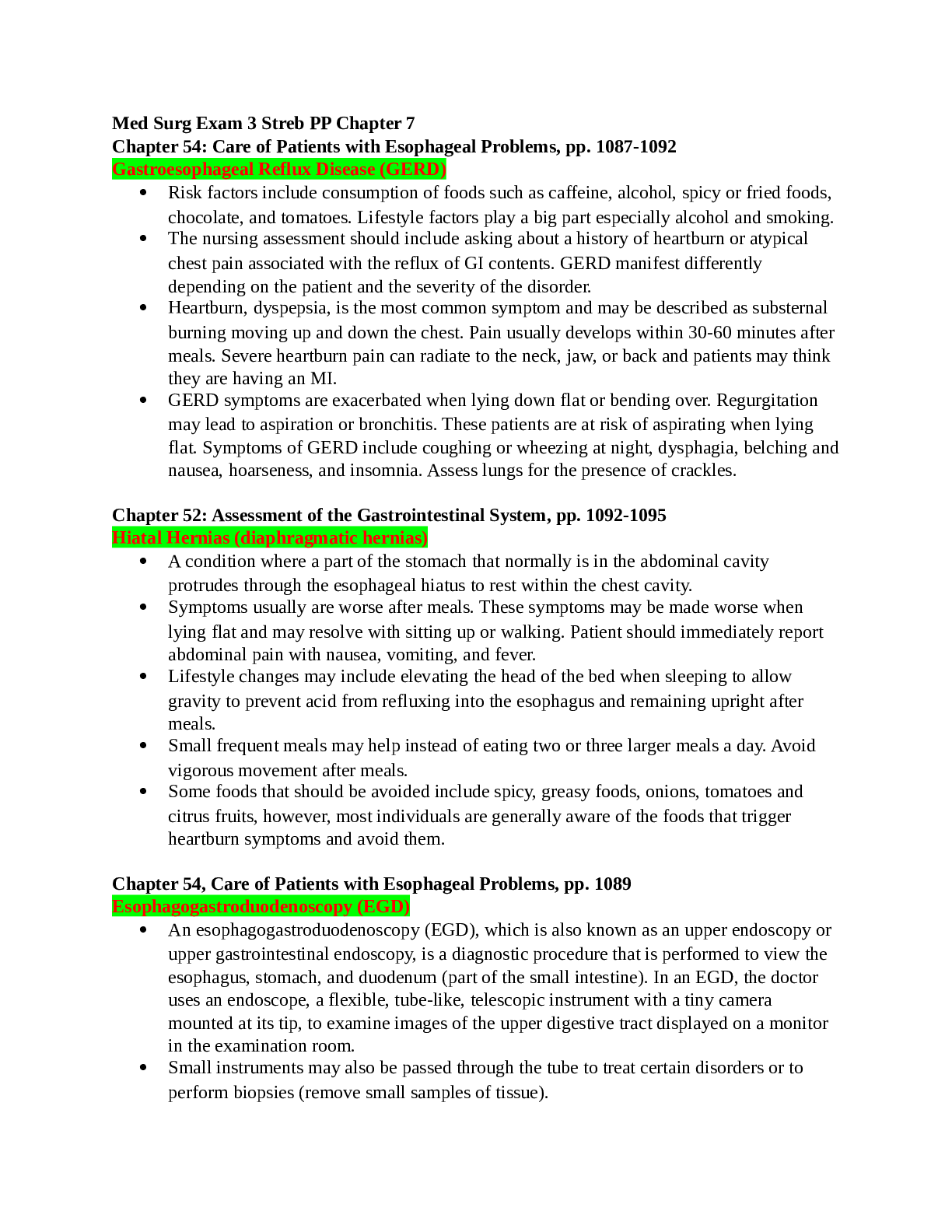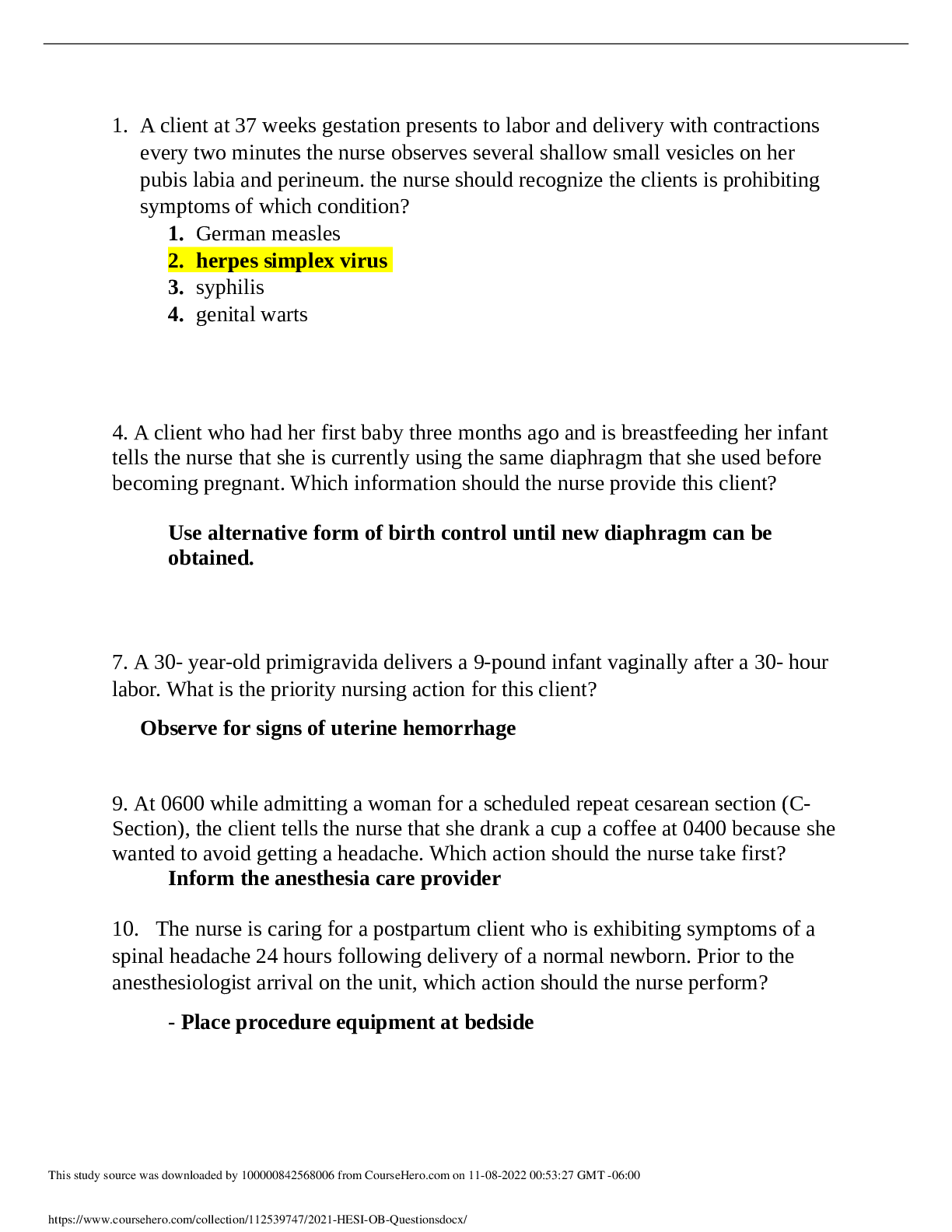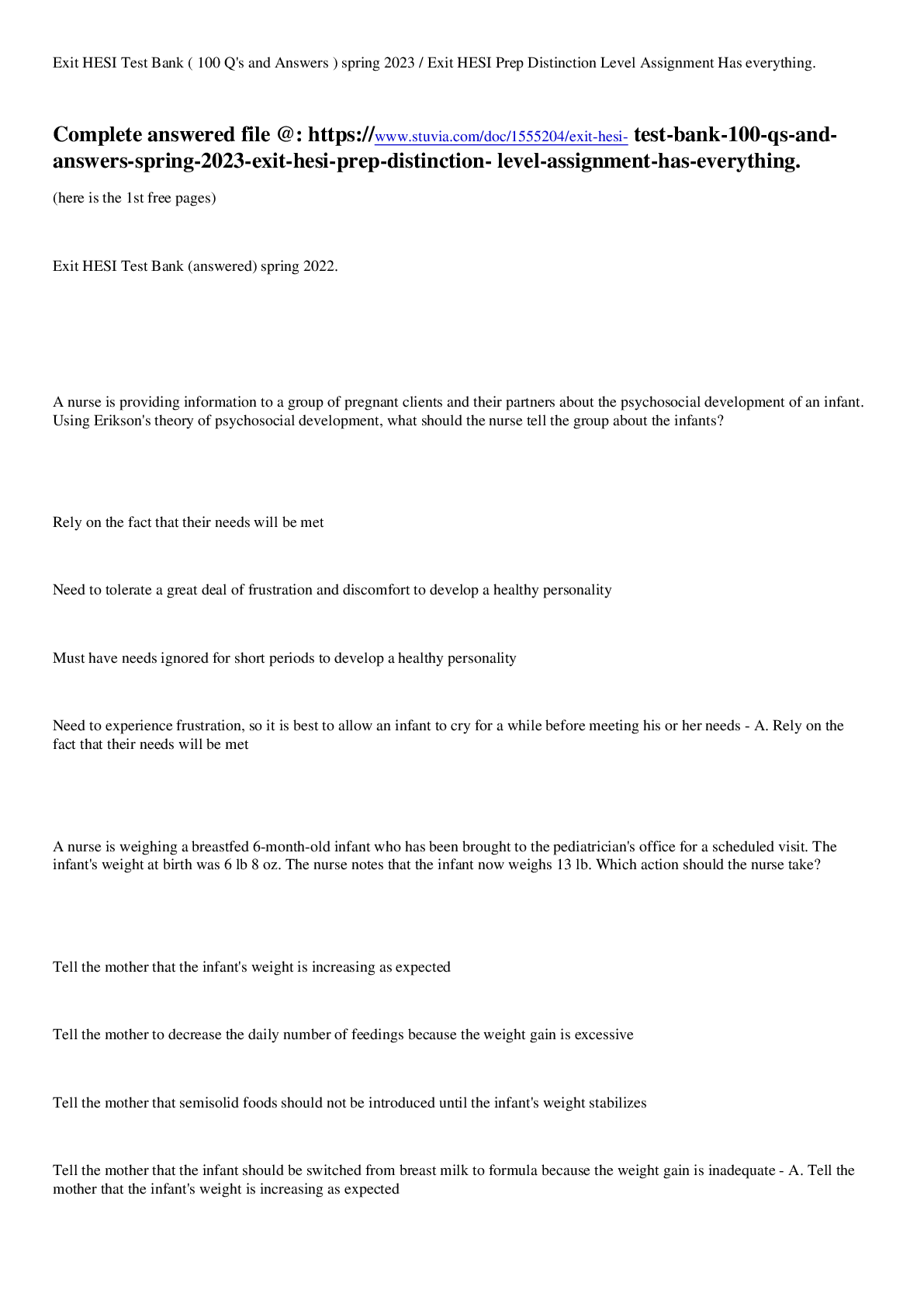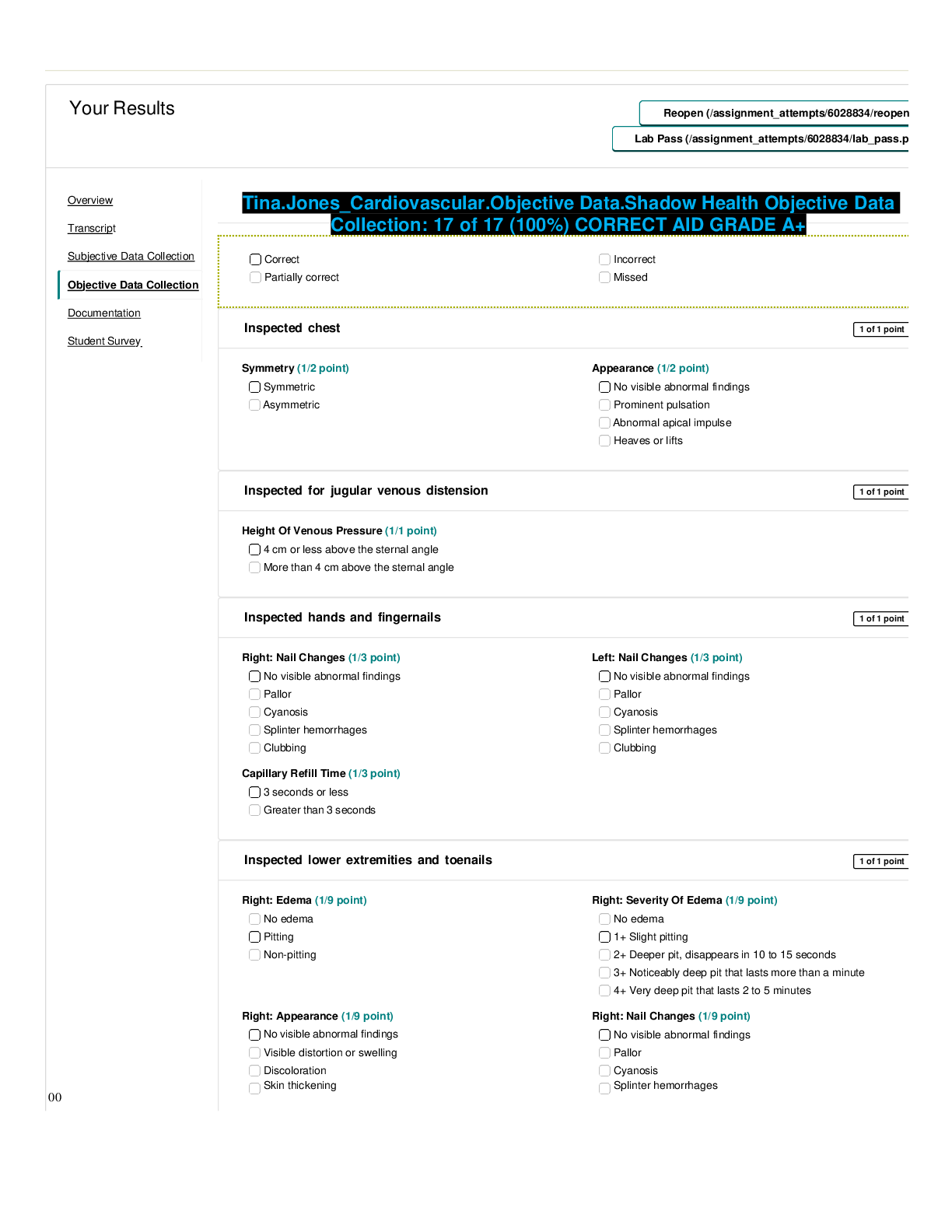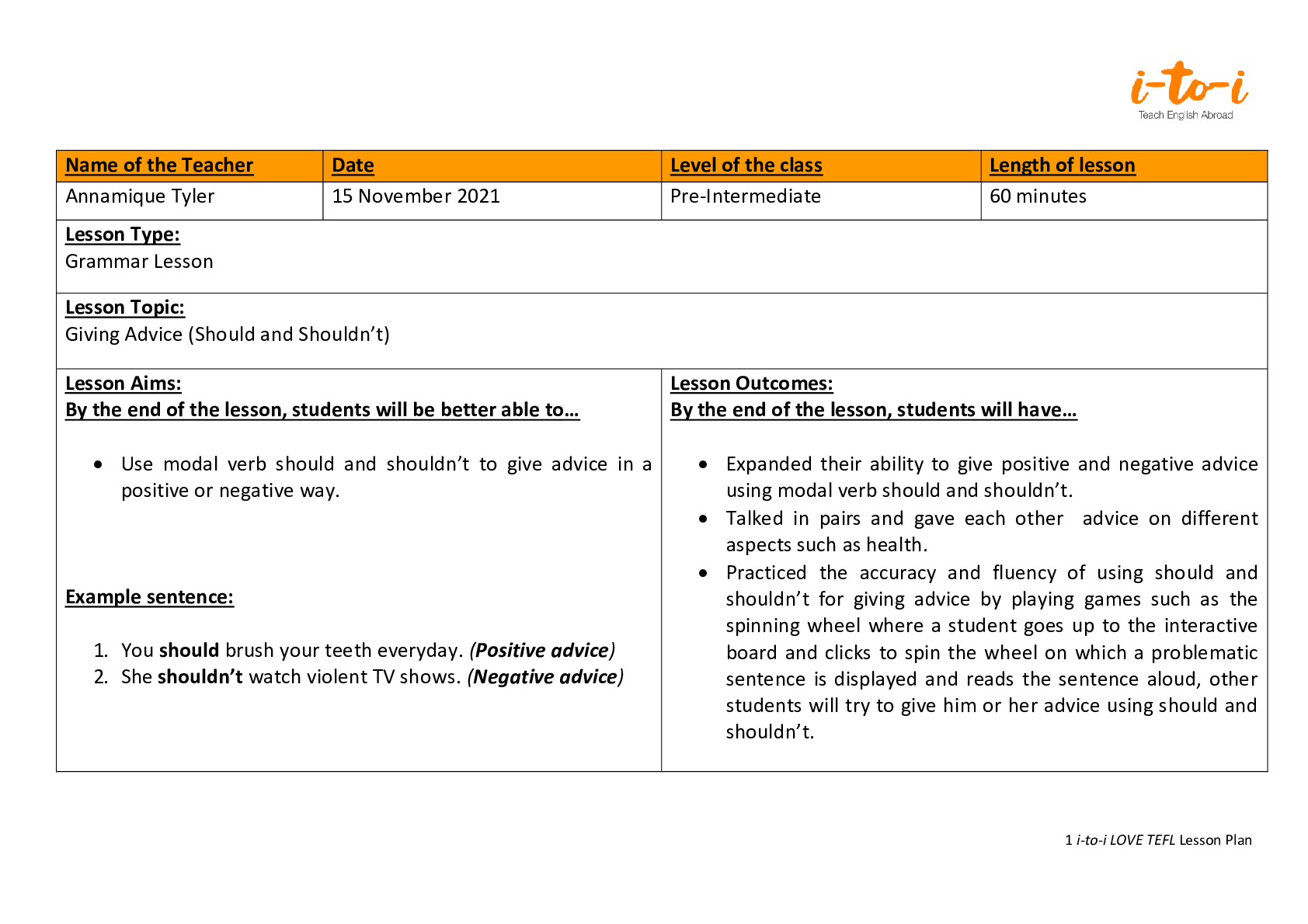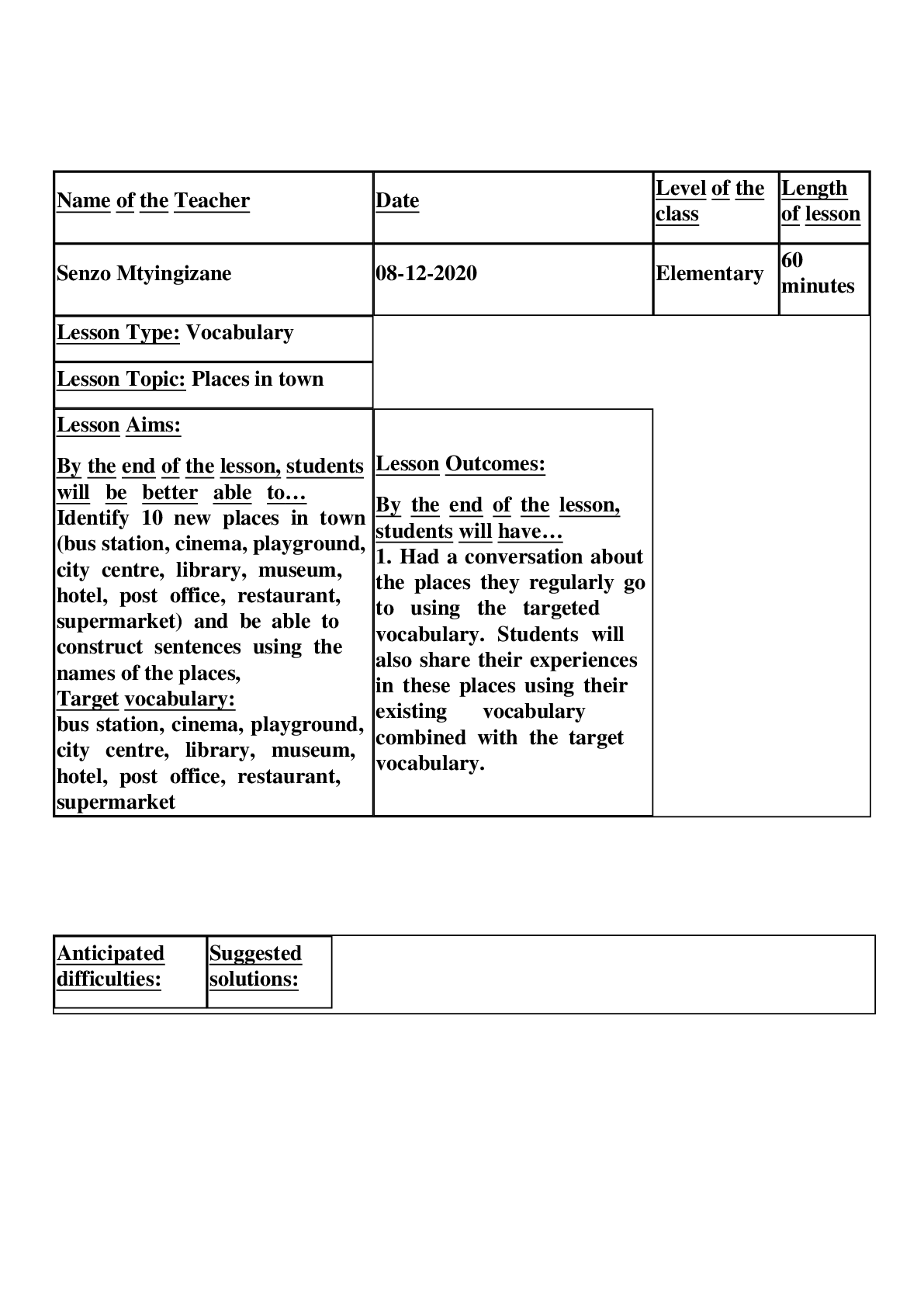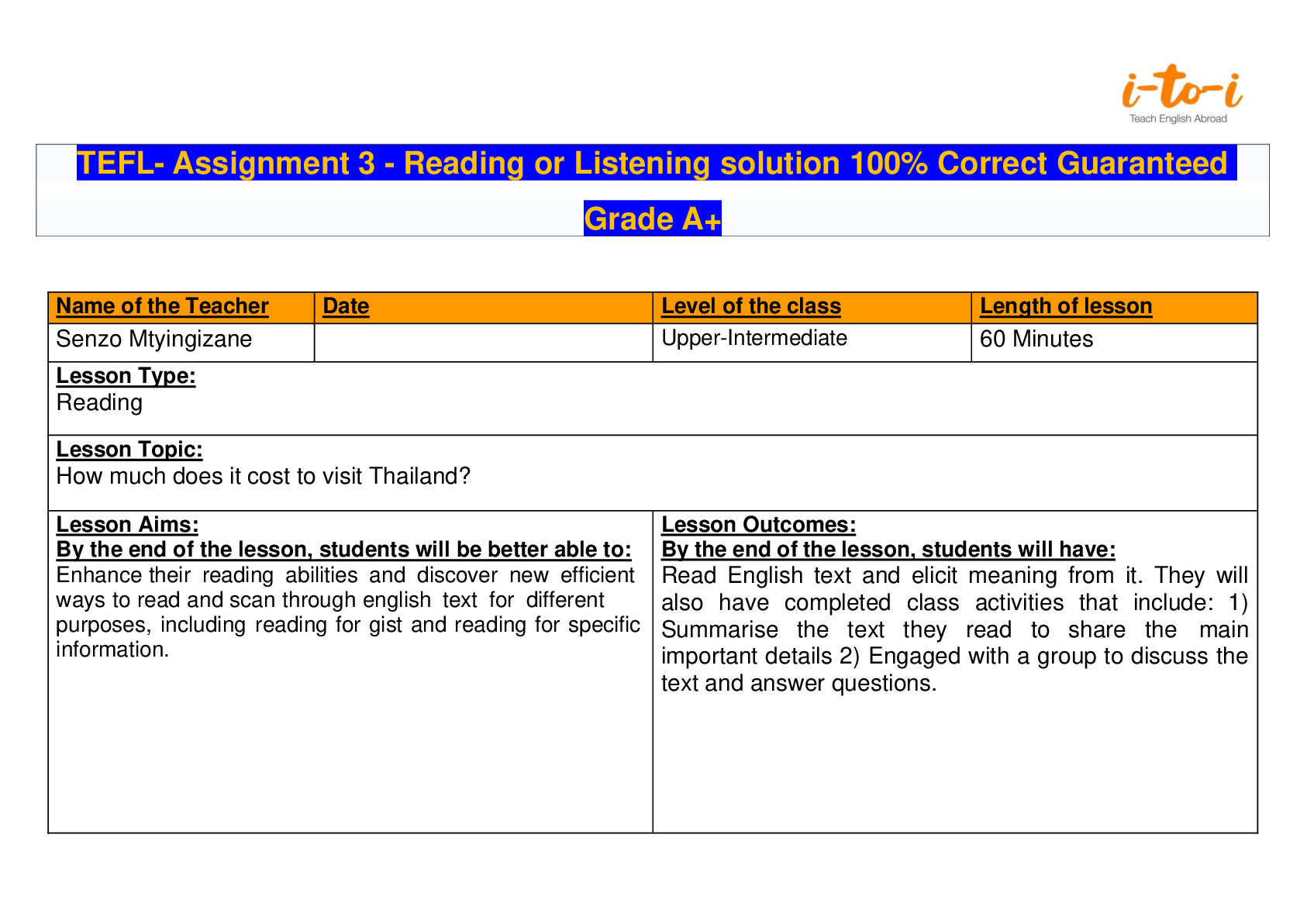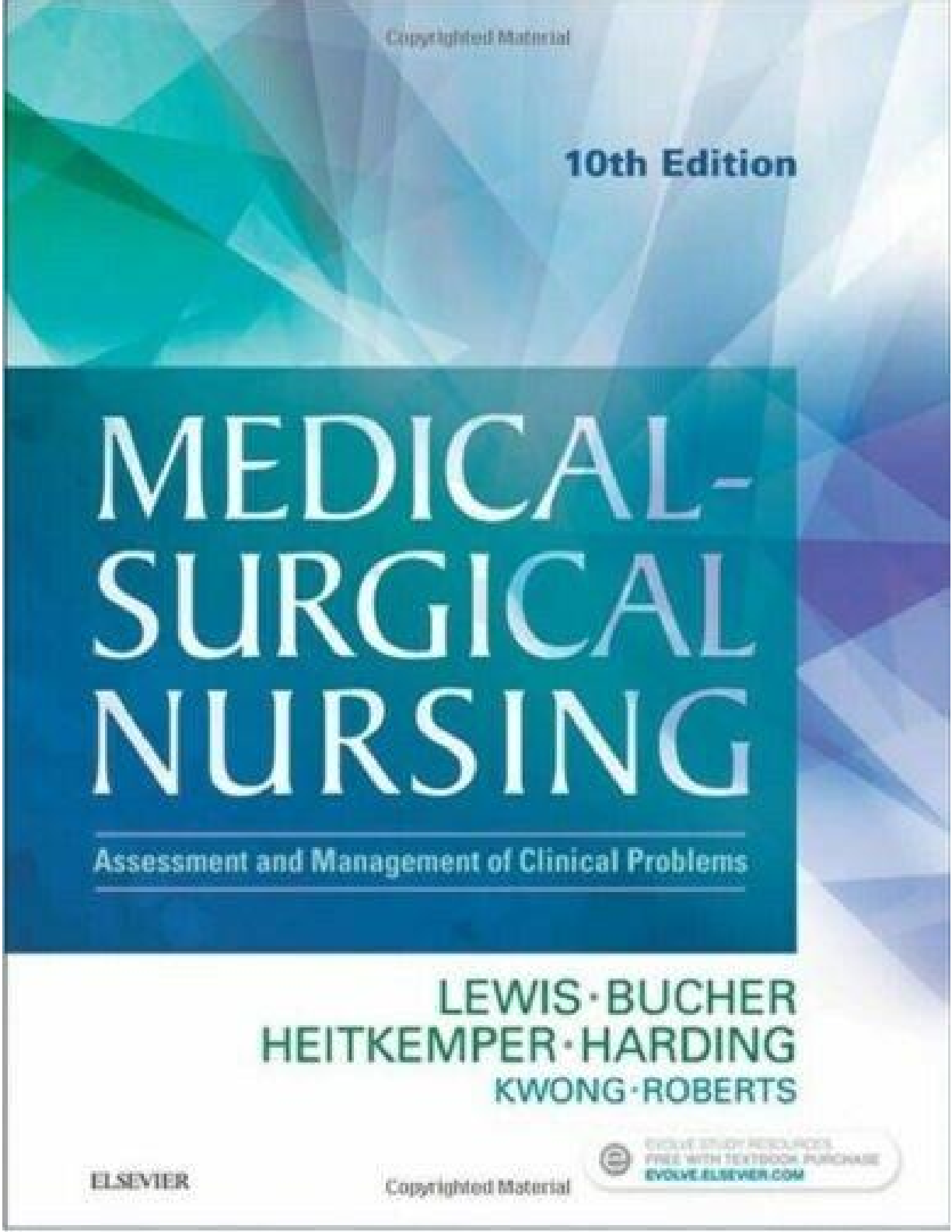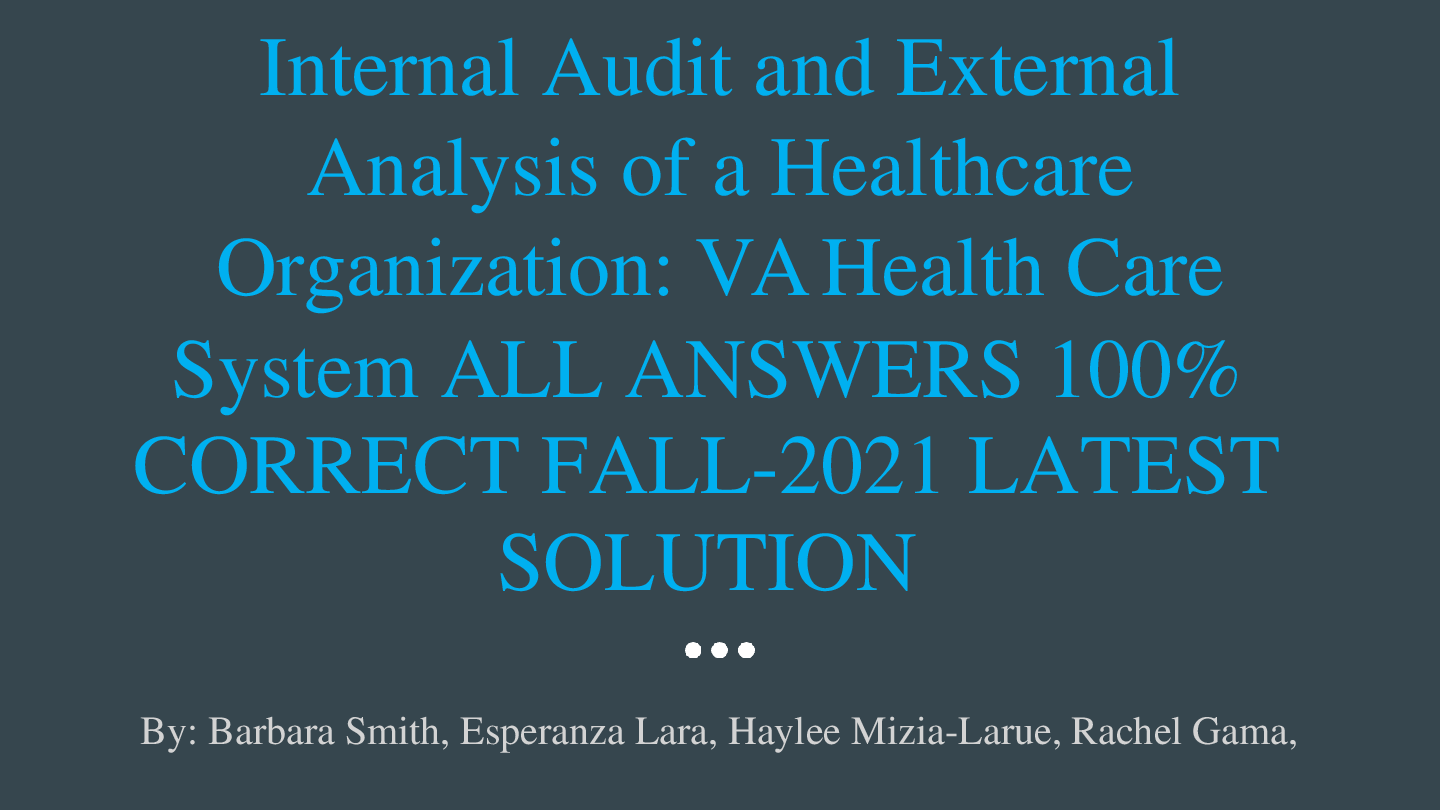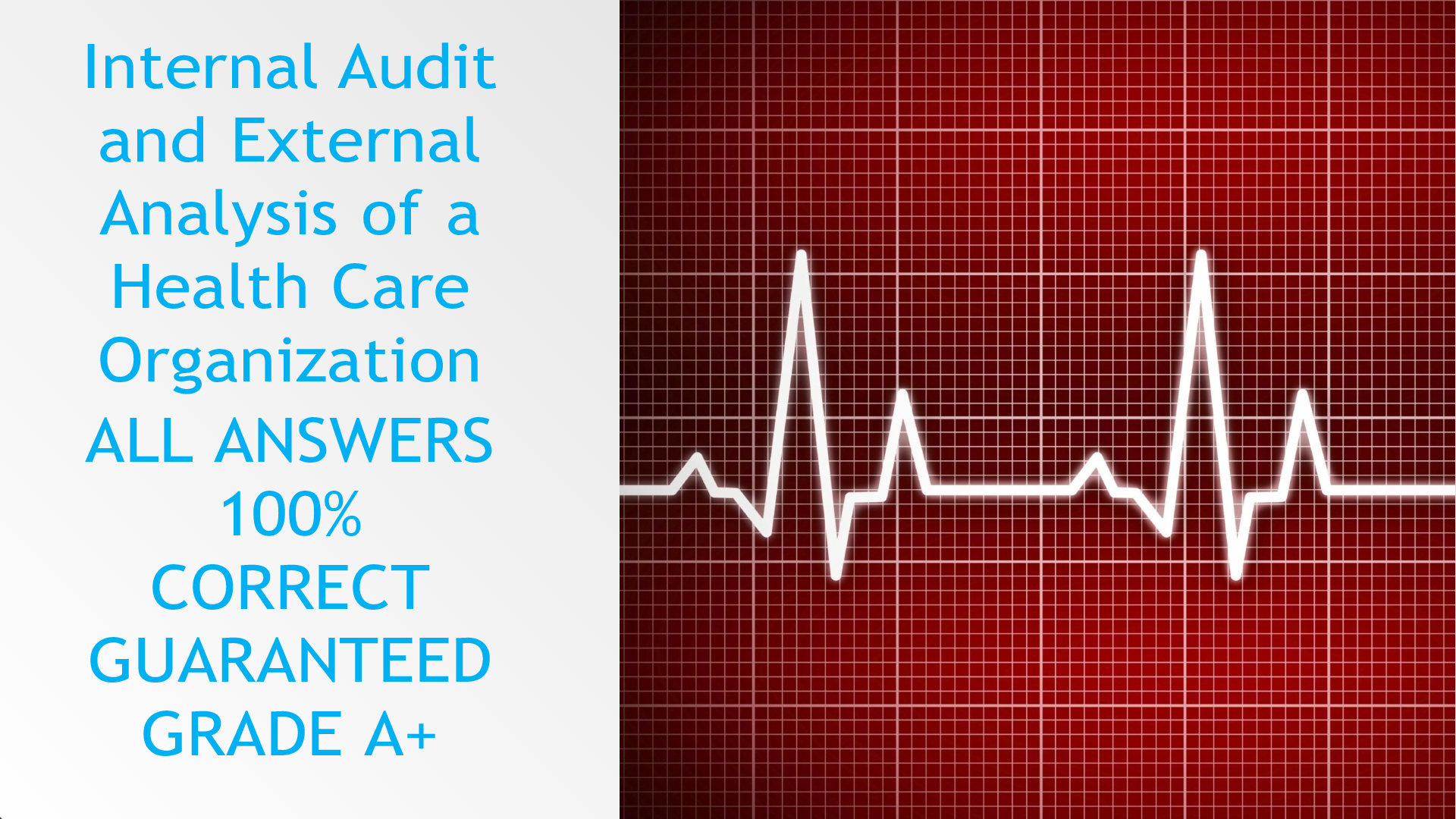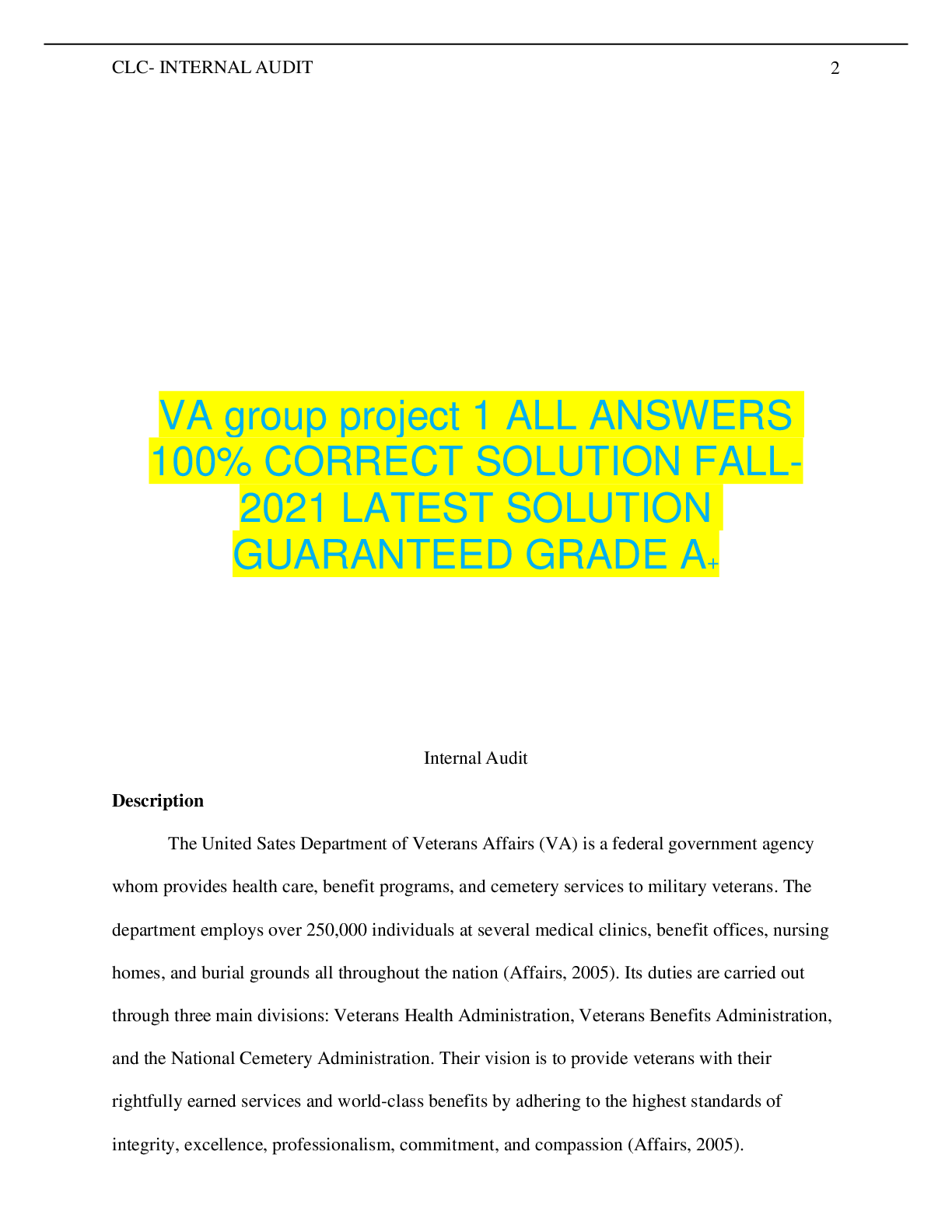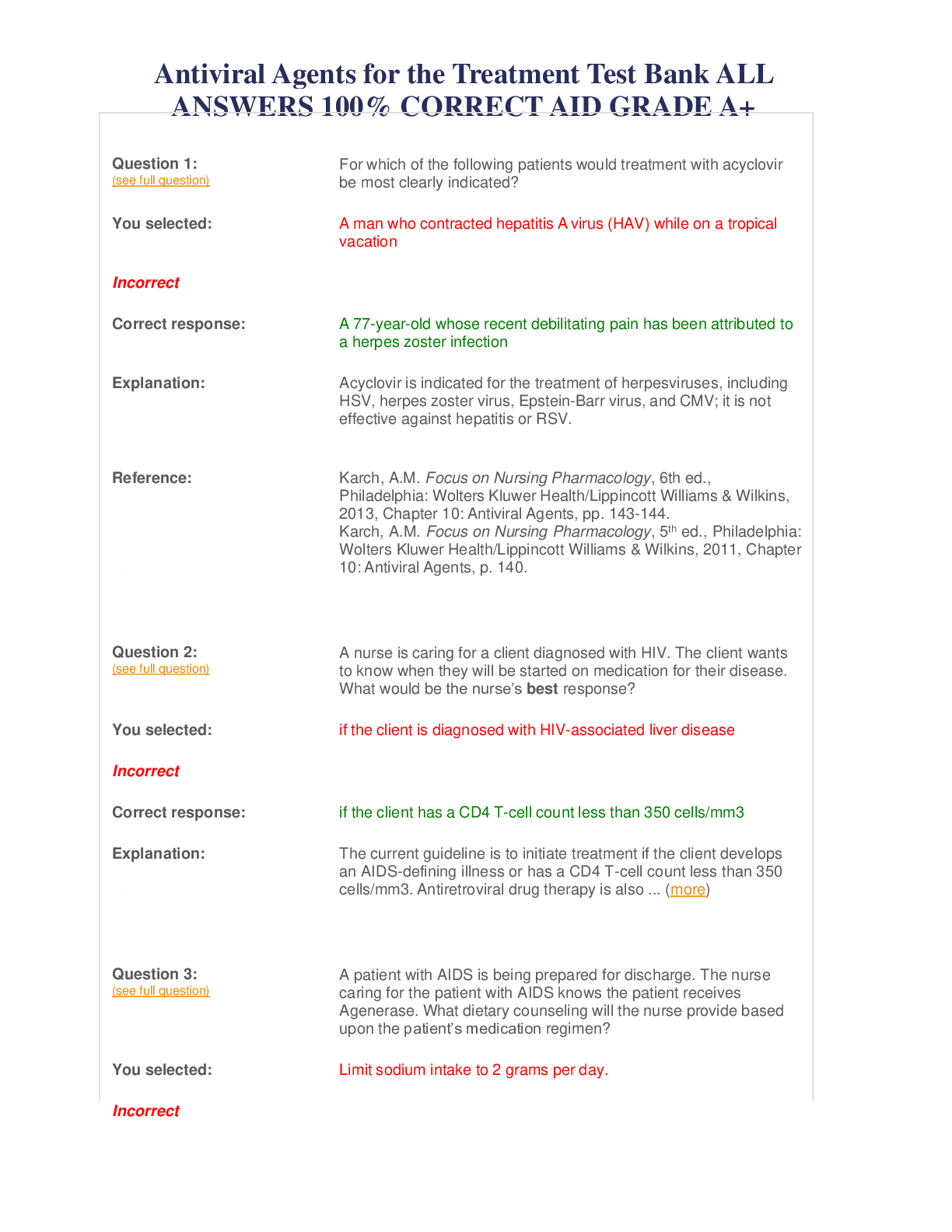*NURSING > QUESTIONS and ANSWERS > HESI A2 Health Information Systems Test Bank Complete Test Preparation ALL ANSWERS 100% CORRECT SPRI (All)
HESI A2 Health Information Systems Test Bank Complete Test Preparation ALL ANSWERS 100% CORRECT SPRING FALL-2022 LATEST SOLUTION GUARANTEED GRADE A+
Document Content and Description Below
Getting Started CONGRATULATIONS! By deciding to take the Health Education Systems (HESI A2) Exam, you have taken the first step toward a great future! Of course, there is no point in taking this impo... rtant examination unless you intend to do your very best in order to earn the highest grade you possibly can. That means getting yourself organized and discovering the best approaches, methods and strategies to master the material. Yes, that will require real effort and dedication on your part but if you are willing to focus your energy and devote the study time necessary, before you know it you will be opening that letter of acceptance to the school of your dreams. We know that taking on a new endeavour can be a little scary, and it is easy to feel unsure of where to begin. That’s where we come in. This study guide is designed to help you improve your test-taking skills, show you a few tricks of the trade and increase both your competency and confidence. The Health Education Systems A2 Exam The HESI A2 exam is composed of modules and not all schools use all of the modules. It is therefore very important that you find out what modules your school will use! That way you won’t waste valuable study time learning something that isn’t on your exam! The HESI A2 Modules are: Math, Vocabulary, Reading Comprehension, Biology, Chemistry, Physics, Basic Scientific principals and Anatomy and Physiology. You don`t have to worry because these sections are included in the Practice Test Questions. However, to maximize your study time, it is very important to check which modules your university offers before studying everything under the sun! While we seek to make our guide as comprehensive as possible, it is important to note that like all entrance exams, the HESI A2 Exam might be adjusted at some future point. New material might be added, or content that is no longer relevant or applicable might be removed. It is always a good idea to give the materials you receive when you register to take the HESI a careful review. Practice Test Questions Set 1 Section I – Reading Comprehension Questions: 45 Time: 45 Minutes Section II – Mathematics Questions: 50 Time: 60 Minutes Section III – Part 1 - English Grammar (optional) Questions: 50 Time: 50 Minutes Section III - Part II – Vocabulary Questions: 50 Time: 50 Minutes Section IV – Part I – Science (optional) Questions: 50 Time: 50 minutes Section IV – Part II – Anatomy & Physiology (optional) Questions: 50 Time: 50 minutes The practice test portion presents questions that are representative of the type of question you should expect to find on the HESI. For the best results, take this Practice Test as if it were the real exam. Set aside time when you will not be disturbed, and a location that is quiet and free of distractions. Read the instructions carefully, read each question carefully, and answer to the best of your ability. Use the bubble answer sheets provided. When you have completed the Practice Test, check your answer against the Answer Key and read the explanation provided. NOTE: The Science, Anatomy and Physiology and English sections are optional. Check with your school for exam details. Answer Sheet – Section 1 - Reading Comprehension Answer Sheet – Section II - Math Answer Sheet – Section III Part I - English Grammar Answer Sheet – Section III Part II – Vocabulary Answer Sheet – Section IV Part I – Biology and Chemistry Answer Sheet – Section IV Part I – Anatomy and Physiology SECTION I - READING COMPREHENSION. Directions: The following questions are based on a number of reading passages. Each passage is followed by a series of questions. Read each passage carefully, and then answer the questions based on it. You may reread the passage as often as you wish. When you have finished answering the questions based on one passage, go right on to the next passage. Choose the best answer based on the information given and implied. Questions 1 – 4 refer to the following passage. Passage 1 - Infectious Disease An infectious disease is a clinically evident illness resulting from the presence of pathogenic agents, such as viruses, bacteria, fungi, protozoa, multi-cellular parasites, and unusual proteins known as prions. Infectious pathologies are also called communicable diseases or transmissible diseases, due to their potential of transmission from one person or species to another by a replicating agent (as opposed to a toxin). Transmission of an infectious disease can occur in many different ways. Physical contact, liquids, food, body fluids, contaminated objects, and airborne inhalation can all transmit infecting agents. Transmissible diseases that occur through contact with an ill person, or objects touched by them, are especially infective, and are sometimes referred to as contagious diseases. Communicable diseases that require a more specialized route of infection, such as through blood or needle transmission, or sexual transmission, are usually not regarded as contagious. The term infectivity describes the ability of an organism to enter, survive and multiply in the host, while the infectiousness of a disease indicates the comparative ease with which the disease is transmitted. An infection however, is not synonymous with an infectious disease, as an infection may not cause important clinical symptoms. 1 1. What can we infer from the first paragraph in this passage? a. Sickness from a toxin can be easily transmitted from one person to another. b. Sickness from an infectious disease can be easily transmitted from one person to another. c. Few sicknesses are transmitted from one person to another. d. Infectious diseases are easily treated. 2. What are two other names for infections’ pathologies? a. Communicable diseases or transmissible diseases b. Communicable diseases or terminal diseases c. Transmissible diseases or preventable diseases d. Communicative diseases or unstable diseases 3. What does infectivity describe? a. The inability of an organism to multiply in the host b. The inability of an organism to reproduce c. The ability of an organism to enter, survive and multiply in the host d. The ability of an organism to reproduce in the host 4. How do we know an infection is not synonymous with an infectious disease? a. Because an infectious disease destroys infections with enough time. b. Because an infection may not cause important clinical symptoms or impair host function. c. We do not. The two are synonymous. d. Because an infection is too fatal to be an infectious disease. Questions 5 – 8 refer to the following passage. Passage 2 - Viruses A virus (from the Latin virus meaning toxin or poison) is a small infectious agent that can replicate only inside the living cells of other organisms. Most viruses are too small to be seen directly with a microscope. Viruses infect all types of organisms, from animals and plants to bacteria and single-celled organisms. Unlike prions and viroids, viruses consist of two or three parts: all viruses have genes made from either DNA or RNA, all have a protein coat that protects these genes, and some have an envelope of fat that surrounds them when they are outside a cell. (Viroids do not have a protein coat and prions contain no RNA or DNA.) Viruses vary from simple to very complex structures. Most viruses are about one hundred times smaller than an average bacterium. The origins of viruses in the evolutionary history of life are unclear: some may have evolved from plasmids— pieces of DNA that can move between cells—while others may have evolved from bacteria. Viruses spread in many ways; plant viruses are often transmitted from plant to plant by insects that feed on sap, such as aphids, while animal viruses can be carried by blood-sucking insects. These disease-bearing organisms are known as vectors. Influenza viruses are spread by coughing and sneezing. HIV is one of several viruses transmitted through sexual contact and by exposure to infected blood. Viruses can infect only a limited range of host cells called the “host range”. This can be broad as when a virus is capable of infecting many species or narrow. 2 5. What can we infer from the first paragraph in this selection? a. A virus is the same as bacterium b. A person with excellent vision can see a virus with the naked eye c. A virus cannot be seen with the naked eye d. Not all viruses are dangerous 6. What types of organisms do viruses infect? a. Only plants and humans b. Only animals and humans c. Only disease-prone humans d. All types of organisms 7. How many parts do prions and viroids consist of? a. Two b. Three c. Either less than two or more than three d. Less than two 8. What is one common virus spread by coughing and sneezing? a. AIDS b. Influenza c. Herpes d. Tuberculosis Questions 9 – 11 refer to the following passage. Passage 3 – Clouds The first stage of a thunderstorm is the cumulus stage, or developing stage. In this stage, masses of moisture are lifted upwards into the atmosphere. The trigger for this lift can be insulation heating the ground producing thermals, areas where two winds converge, forcing air upwards, or where winds blow over terrain of increasing elevation. Moisture in the air rapidly cools into liquid drops of water, which appears as cumulus clouds. As the water vapor condenses into liquid, latent heat is released which warms the air, causing it to become less dense than the surrounding dry air. The warm air rises in an updraft through the process of convection (hence the term convective precipitation). This creates a low-pressure zone beneath the forming thunderstorm. In a typical thunderstorm, approximately 5×108 kg of water vapor is lifted, and the amount of energy released when this condenses is about equal to the energy used by a city of 100,000 in a month. 3 9. The cumulus stage of a thunderstorm is the a. The last stage of the storm b. The middle stage of the storm formation c. The beginning of the thunderstorm d. The period after the thunderstorm has ended 10. One of the ways the air is warmed is a. Air moving downwards, which will creates a high-pressure zone b. Air cooling and becoming less dense, causing it to rise c. Moisture moving downward toward the earth d. Heat created by water vapor condensing into liquid 11. Identify the correct sequence of events a. Warm air rises, water droplets condense, creating more heat, and the air rises further. b. Warm air rises and cools, water droplets condense, causing low pressure. c. Warm air rises and collects water vapor, the water vapor condenses as the air rises, which creates heat, and causes the air to rise further. d. None of the above. Questions 12 – 14 refer to the following passage. Passage 4 – US Weather Service The United States National Weather Service classifies thunderstorms as severe when they reach a predetermined level. Usually, this means the storm is strong enough to inflict wind or hail damage. In most of the United States, a storm is considered severe if winds reach over 50 knots (58 mph or 93 km/h), hail is ¾ inch (2 cm) diameter or larger, or if meteorologists report funnel clouds or tornadoes. In the Central Region of the United States National Weather Service, the hail threshold for a severe thunderstorm is 1 inch (2.5 cm) in diameter. Though a funnel cloud or tornado indicates the presence of a severe thunderstorm, the various meteorological agencies would issue a tornado warning rather than a severe thunderstorm warning in this case. Meteorologists in Canada define a severe thunderstorm as either having tornadoes, wind gusts of 90 km/h or greater, hail 2 centimeters in diameter or greater, rainfall more than 50 millimeters in 1 hour, or 75 millimeters in 3 hours. Severe thunderstorms can develop from any type of thunderstorm. 3 12. What is the purpose of this passage? a. Explaining when a thunderstorm turns into a tornado b. Explaining who issues storm warnings, and when these warnings should be issued c. Explaining when meteorologists consider a thunderstorm severe d. None of the above 13. It is possible to infer from this passage that a. Different areas and countries have different criteria for determining a severe storm b. Thunderstorms can include lightning and tornadoes, as well as violent winds and large hail c. If someone spots both a thunderstorm and a tornado, meteorological agencies will immediately issue a severe storm warning d. Canada has a much different alert system for severe storms, with criteria that are far less 14. What would the Central Region of the United States National Weather Service do if hail was 2.7 cm in diameter? a. Not issue a severe thunderstorm warning. b. Issue a tornado warning. c. Issue a severe thunderstorm warning. d. Sleet must also accompany the hail before the Weather Service will issue a storm warning. Questions 15 – 18 refer to the following passage. Passage 5 – Clouds A cloud is a visible mass of droplets or frozen crystals floating in the atmosphere above the surface of the Earth or other planetary bodies. Another type of cloud is a mass of material in space, attracted by gravity, called interstellar clouds and nebulae. The branch of meteorology which studies clouds is called nephrology. When we are speaking of Earth clouds, water vapor is usually the condensing substance, which forms small droplets or ice crystal. These crystals are typically 0.01 mm in diameter. Dense, d [Show More]
Last updated: 1 year ago
Preview 1 out of 154 pages
Instant download
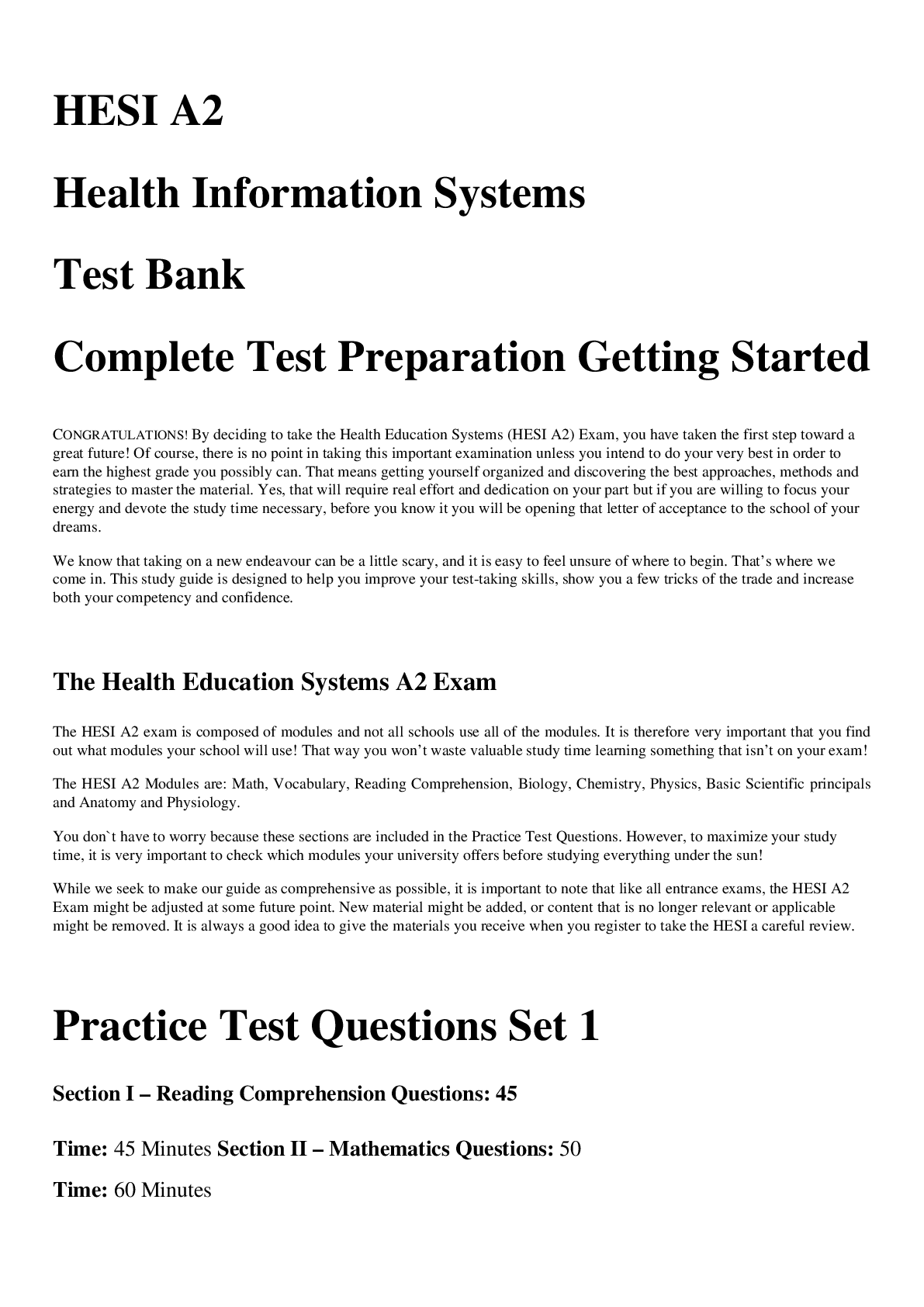
Buy this document to get the full access instantly
Instant Download Access after purchase
Add to cartInstant download
Reviews( 0 )
Document information
Connected school, study & course
About the document
Uploaded On
Aug 20, 2022
Number of pages
154
Written in
Additional information
This document has been written for:
Uploaded
Aug 20, 2022
Downloads
0
Views
42


